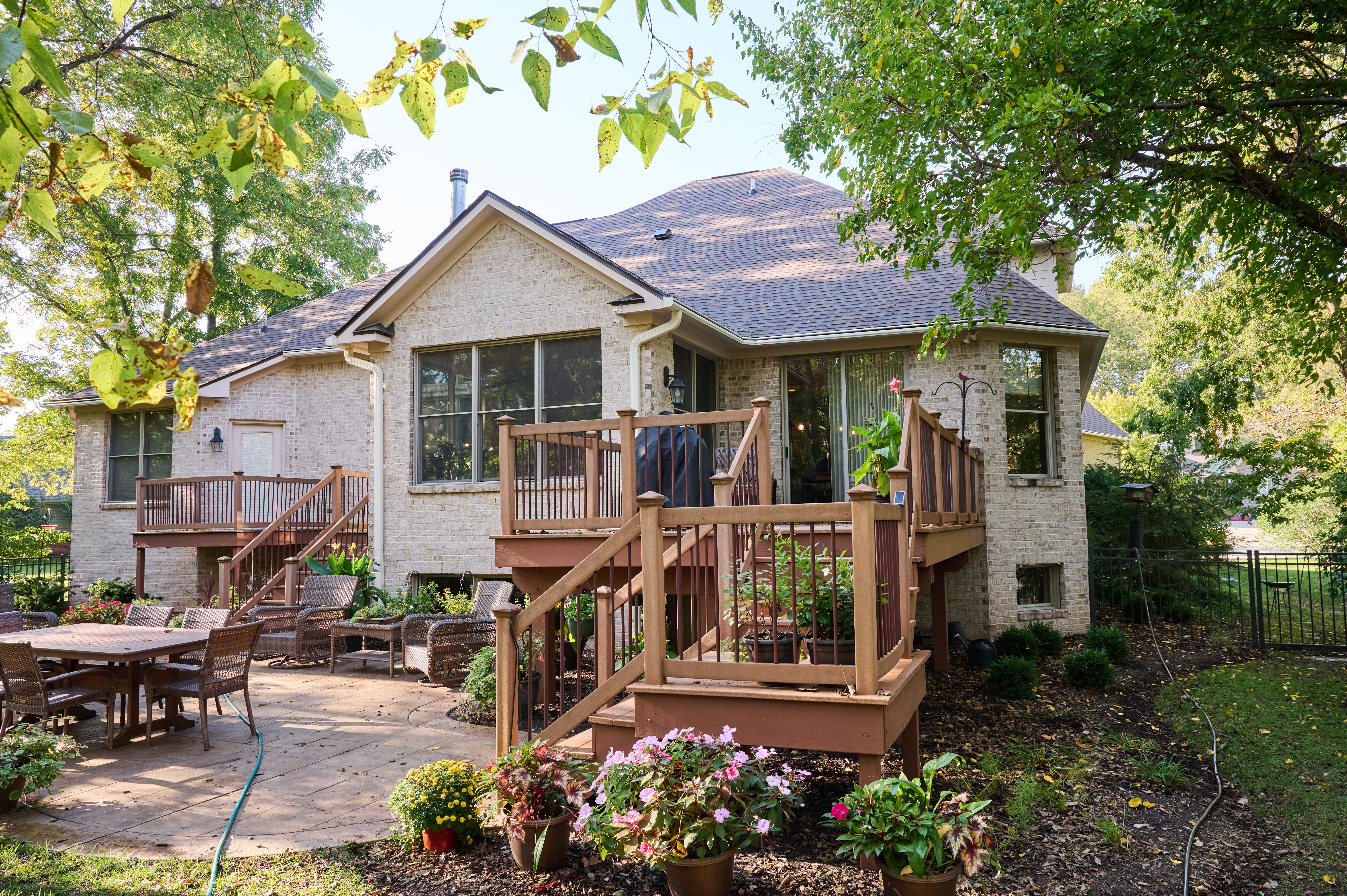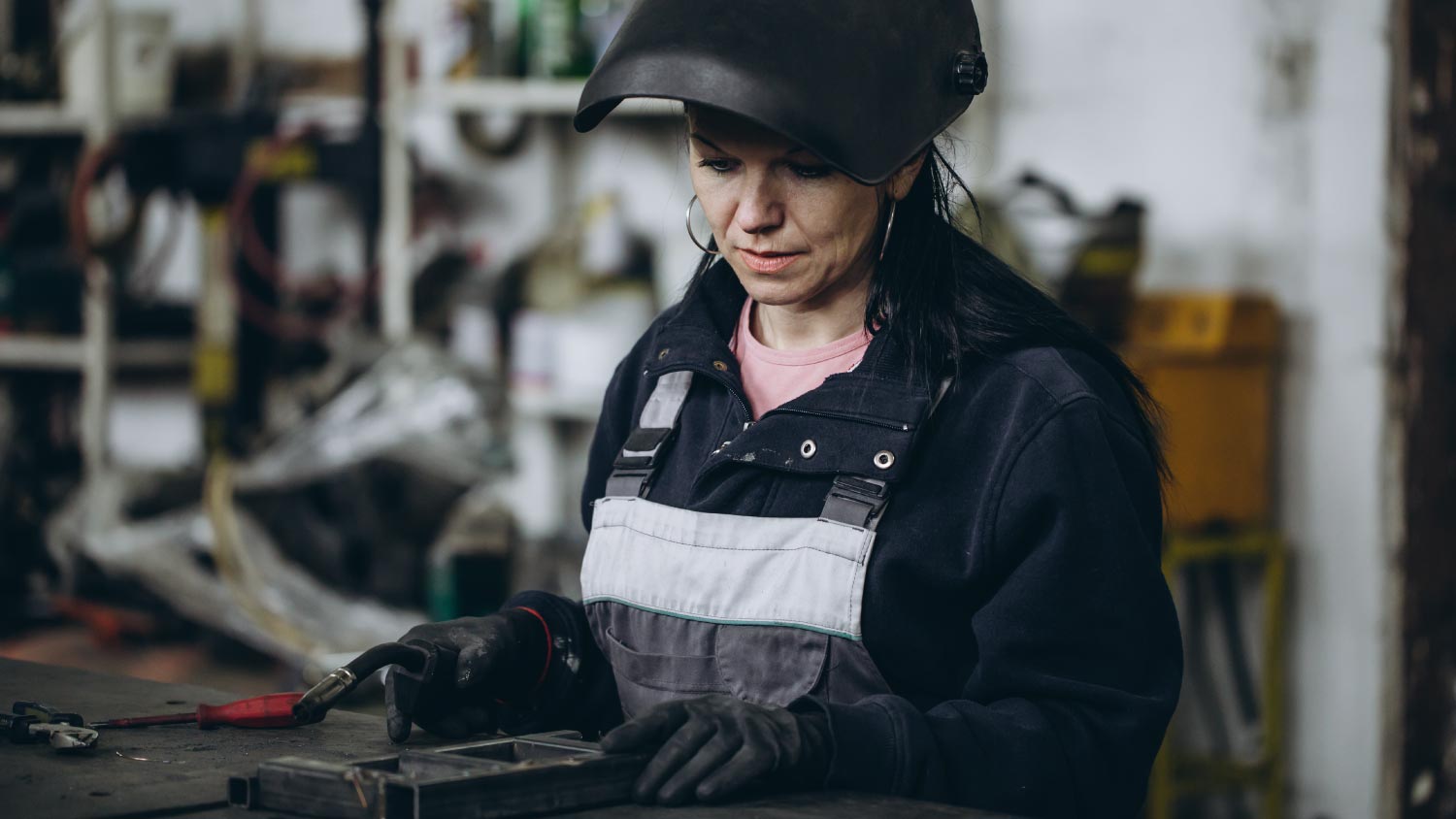
Find out average roof shingle repair costs, factors affecting pricing, such as material and labor, and how to save on your next roof repair project.
The average welding cost is $500, with most homeowners paying between $250 and $900. Main factors include project type, materials, and labor rates.


Welding joins or repairs metal for projects like fences, gates, furniture, and structural supports.
The main welding cost factors are project size, material type, and labor rates.
Professional welding costs $60 to $125 per hour, increasing durability and safety, adding value, and reducing future repairs.
Add-ons such as powder coating, decorative finishes, or mobile welding services can add up to $500 to the total.
This article was created using automation technology and thoroughly fact-checked and edited by an Angi Editor in accordance with our AI policy.
The average cost of a welding project ranges from $250 to $900 for most home projects, averaging $500. Prices depend on the type of welding, materials, and labor rates in your area. Some welders charge by the hour, while others quote per project or by linear foot for larger jobs.
Whether you need a small repair or a custom metal build, understanding welding cost helps you budget wisely. This guide explains what affects welding prices, ways to save, and how to choose between DIY and hiring a pro.
Several factors shape welding cost, from the type of project to the materials involved. Let’s break down what goes into the price.
Homeowners use welding for a variety of projects, incorporating it into the cost of repairing fences and gates to building custom furniture or tackling automotive repairs. Welding costs change based on the project’s complexity—simple repairs are less expensive than custom fabrication or structural steel work.
Different welding methods, such as MIG (metal inert gas), TIG (tungsten inert gas), stick, and flux-cored welding, also impact cost. MIG and stick welding are often more affordable, while TIG and specialty welding are priced higher due to skill and precision requirements.
| Welding Project Type | Average Cost Range | Description |
|---|---|---|
| Fence repair | $150–$350 | Fixing broken or rusted metal fence sections |
| Gate fabrication | $400–$1,200 | Building or installing new metal gates |
| Structural steel | $500–$2,500 | Welding beams, posts, or load-bearing supports |
| Decorative metalwork | $200–$900 | Custom railings, artwork, or ornamental features |
| Automotive repairs | $100–$600 | Welding vehicle frames, exhausts, or body panels |
| Furniture fabrication | $250–$800 | Building or repairing metal tables, chairs, or benches |
The size or scope of your welding project has a major impact on cost. Small repairs, such as patching a few inches of broken fence, are less expensive, while large builds or long seams drive up the price.
Welders may charge per inch, foot, or for the entire project, depending on the job. Longer welds, thicker materials, or intricate designs require more time and resources, increasing the total welding cost.
| Project Size | Average Cost Range | Description |
|---|---|---|
| Small repair (under 1 f.t) | $100–$250 | Minor fixes, single welds, or patch jobs |
| Medium project (1–10 ft.) | $250–$700 | Gates, sections of railing, or automotive repairs |
| Large structure (10+ ft. or custom) | $700–$2,500 | Full fences, large gates, or structural steel builds |
Material choice is a key factor in the cost of welding projects. Common metals include steel, stainless steel, aluminum, and cast iron. Specialty metals, thicker gauges, or premium finishes raise costs due to material price and added difficulty. Material thickness and grade also affect labor time and consumable use, increasing the overall welding cost.
If you supply the metal, you may save on markup, but many welders prefer to source materials to guarantee quality and compatibility.
| Material Type | Cost per Lb./Unit |
|---|---|
| Mild steel | $1–$3 |
| Stainless steel | $3–$8 |
| Aluminum | $4–$10 |
| Cast iron | $2–$5 |
| Specialty metals | $8–$20 |
Labor is a significant part of the cost of welding projects. Professional welders charge by the hour, per project, or by the linear foot. Hourly rates range from $60 to $125, with minimum service charges for small jobs. Some welders include setup, cleanup, and equipment use in their quoted price, while others charge separately. Travel fees may apply for mobile or remote jobs, especially if the welder must haul heavy equipment.
Experience and certifications can increase labor rates—union welders or those with advanced qualifications may charge more, but they often deliver higher quality or meet special code requirements. Regional differences mean urban areas and regions with higher living costs often see higher welding rates.
Project preparation can add to your welding cost. Tasks like cleaning, surface prep, removing old welds, or ensuring site access require time and sometimes special equipment. Removing rust, degreasing, or cutting existing metal before welding increases labor hours and may add $50 to $200 to your total.
If you can safely prepare the area in advance—clearing debris, moving obstacles, or cleaning surfaces—you’ll help keep costs lower.
Several other factors can influence the cost of your welding project, including:
Permits and inspection fees, especially for structural or outdoor work, may add $50 to $300.
Post-construction cleanup or debris removal can cost $50 to $150.
Mobile welding services often include a travel fee of $25 to $100.
Decorative finishes, powder coating, or specialty coatings may add $100 to $500.
Rush jobs or after-hours service can carry surcharges of 10% to 30%.
Integrating welded parts with electrical or structural systems may add coordination costs.
Removing or demolishing old welded structures can cost an additional $100 to $400.
Welding is not just a one-time expense. Maintaining and caring for welded structures keeps them safe and looking good.
Routine maintenance for welded items—like fences, gates, or railings—includes regular inspection, cleaning, and rust prevention. Professional maintenance services cost $100 to $300 per visit, depending on the size and complexity. You can handle basic cleaning and touch-ups yourself with supplies like wire brushes and rust-resistant paint, which costs $20 to $50 annually.
Welded structures may need repairs due to cracked welds, corrosion, or joint failure. Small repairs often have a minimum service charge of $100 to $200. The cost increases if the damage is extensive, the material is hard to access, or specialized welding techniques are needed. Repairing stainless steel or aluminum is more expensive than repairing mild steel, and complex repairs can reach $500 or more.
Large or structural welding projects may require permits and inspections, which are tied to insurance requirements. Welding work could impact your homeowners' insurance premiums, especially if it alters the structure or adds liability. Professional welders carry liability insurance, which is built into their fees, protecting you from accidents or damage during the job.
Some homeowners consider DIY welding to save on labor, but there are important costs and considerations.
DIY welding requires buying or renting equipment, purchasing materials, and investing in safety gear. A basic entry-level MIG or stick welder costs $300 to $800, with consumables (wire, rods, gas) adding $30 to $100 per project. Safety gear (helmet, gloves, jacket) is another $75 to $200. Renting a welder may cost $40 to $70 per day.
While you avoid labor charges, DIY welding demands skill, patience, and strict attention to safety. The time commitment and learning curve are significant—expect to spend several hours on small projects, with complex jobs taking much longer. Errors can lead to safety hazards or failed inspections.
It’s best to hire a local welder for load-bearing or code-regulated projects to ensure safety and compliance.
Many welding projects include optional add-ons that can enhance appearance, durability, or functionality. Here are the costs for popular options:
Powder coating costs: $100 to $400 per item, depending on size and complexity
Decorative finishes or custom designs: $150 to $600
Structural reinforcements or bracing: $100 to $500
Integration with gates, locks, or automation: $200 to $800
Rust-proofing or weatherproofing treatments: $75 to $300
Additional fabrication (hinges, brackets, supports): $50 to $250
Each add-on increases your total welding cost, so prioritize based on your needs and budget.
Let’s look at practical ways to keep your welding costs as low as possible:
Get multiple quotes from local welders for the best price.
Combine multiple welding projects to save on minimum charges and travel fees.
Prepare the work area and materials in advance to reduce labor time.
Use standard materials instead of custom or specialty metals.
Schedule work during off-peak times to avoid rush fees.
Consider partial DIY (e.g., prep work) if you have the skills and tools.
Maintain welded structures regularly to prevent costly repairs.
Home is the most important place on earth, which is why Angi has helped more than 150 million homeowners transform their houses into homes they adore. To help homeowners with their next project, Angi provides readers with the most accurate cost data and upholds strict editorial standards. We extensively research project costs to develop the pricing data you see, so you can make the best decisions for you and your home. We rely on reputable sources, including the U.S. Bureau of Labor Statistics, academic journals, market studies, and interviews with industry experts—all to ensure our prices reflect real-world projects.
Want to help us improve our cost data? Send us a recent project quote to [email protected]. Quotes and personal information will not be shared publicly.
From average costs to expert advice, get all the answers you need to get your job done.

Find out average roof shingle repair costs, factors affecting pricing, such as material and labor, and how to save on your next roof repair project.

The cost to replace roof vent boots depends on a few factors, like the size of the vent, its location, and your existing roof material.

Getting a wind mitigation inspection can work in your financial favor. Learn about the average wind mitigation inspection cost, including ways to save.

Follow these four straightforward steps to install hurricane ties. The number of ties and the demand load will impact the project.

If you need a new flat roof, learn about tar and gravel roof costs and what can affect your total to make sure you budget accurately.

An attic without proper ventilation can cause a number of roofing problems, inside and out. Here’s how you can tell if a poorly ventilated attic is wrecking your roof.